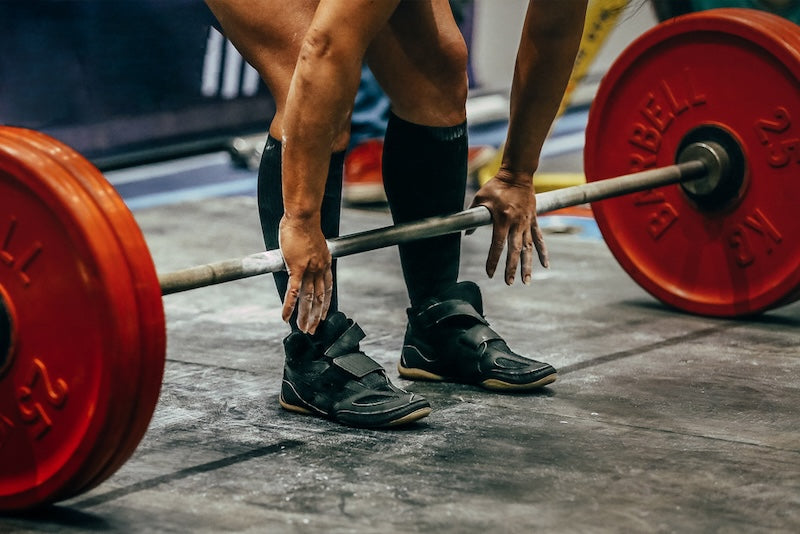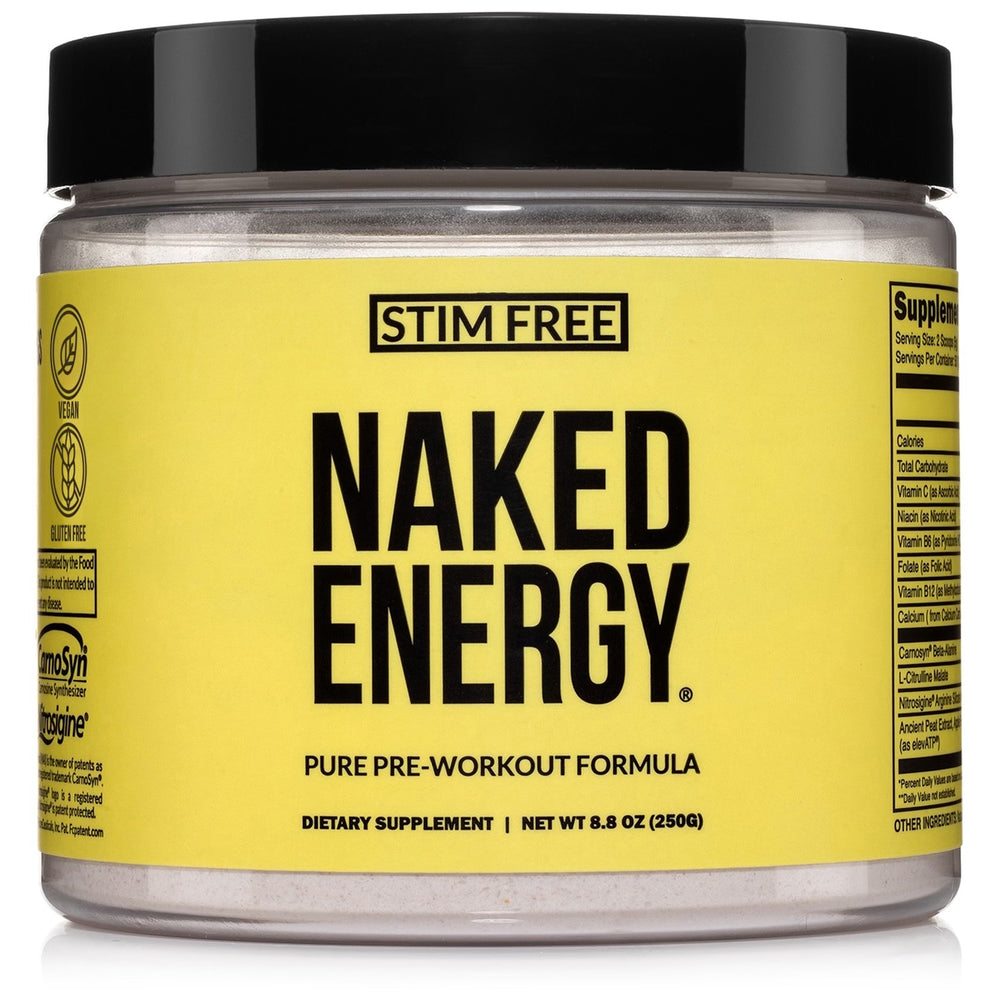If you’ve been lifting for a while, strength plateaus will be nothing new. Watching your progress stall is incredibly frustrating. But negative reps may be the solution to your struggles.
Also known as eccentric training, negative reps are one of the most effective, underutilized tools in strength training. They’re simple in theory but brutally effective in practice. And when applied correctly, they can reignite progress that’s been stalled for weeks or even months.
In this article, we’ll break down what negative reps are, why they work so well, how to incorporate them into your training, and what you need to be cautious about. We’ll give you everything you need to break through the ceiling and start making serious progress towards your lifting goals.
What Are Negative Reps?

Negative reps are when you emphasize the eccentric phase of a lift – the part where your muscles lengthen under tension.
This is the “lowering” portion of an exercise. For example, in a bench press, it's the controlled descent of the bar to your chest. In a pull-up, it’s the slow drop from the bar after you've reached the top.
What makes this phase special is that your muscles are significantly stronger during the eccentric (lowering) portion than the concentric (lifting) phase. In fact, studies show you can handle about 20 to 40 percent more weight on the way down than you can lift up.
That means you can load your muscles more heavily (and safely) than you normally would.
Negative reps take advantage of this by either using heavier loads, or extending the time spent lowering the weight.
Both strategies create a powerful training stimulus that your body isn’t used to, which is exactly what you need to break through a plateau.
The Science Behind Negative Reps

It sounds a little like broscience. But the idea behind negative reps is actually grounded in real exercise science.
In the eccentric phase of a lift, you create greater mechanical tension and muscle damage compared to the lifting phase. These are two of the primary drivers of muscle growth and strength development.
During eccentric contractions, your muscle fibers are under load while being stretched. This produces more microscopic damage in the muscle tissue. And this is a good thing, because that damage is what triggers the repair and growth process.
At the same time, eccentric loading increases the recruitment of high-threshold motor units. These are the muscle fibers most responsible for explosive strength and power.
Studies show that eccentric training not only builds muscle effectively, but also leads to significant neural adaptations.
As this 2015 paper from BioMed Research International states:
“Eccentric exercise-induced adaptations include muscle hypertrophy, increased cortical activity, and changes in motor unit behavior, all of which contribute to improved muscle function.”
In other words, your nervous system gets better at coordinating and firing muscle fibers. This directly translates to improved strength.
And perhaps most importantly for plateau-busting: because eccentric reps let you handle more weight than usual, they provide a new stimulus your body hasn’t adapted to, making this an essential ingredient for breaking through stalled progress.
Why They Help Break Through Strength Plateaus

A strength plateau is a sign that your body has adapted to your current training. You’re no longer challenging it in a way that demands further growth or adaptation.
This is where negative reps are so effective. They break that pattern by introducing a new and more intense stimulus.
Because your muscles can handle more weight, negative reps let you train with heavier loads.
This creates mechanical stress that your body hasn’t encountered, forcing it to respond. It’s like hitting the reset button on your progress.
Negative reps also improve your control and stability, which often carries over into better performance during the lifting phase.
For example, slowly lowering a heavy bar in a bench press strengthens not just your chest and triceps, but also the stabilizers in your shoulders. That leads to more efficient and powerful lifts.
Eccentric training also stimulates connective tissues, like tendons and ligaments, in a way that traditional lifting often doesn’t.
Strengthening these structures reduces injury risk and builds a stronger foundation for future progress.
How to Incorporate Negative Reps in Your Training

So how do negative reps work in practice?
Adding negative reps to your program doesn’t mean a major overhaul to how you lift. There are a few smart, simple ways to integrate them based on your experience level and available equipment.
Let’s take a look at a few options.
Partner-assisted negatives
One of the most effective approaches is partner-assisted negatives. This works well for exercises like the bench press or pull-up.
A spotter helps you lift the weight through the concentric (up) phase, then you lower it slowly and under control, ideally for a count of three to six seconds.
This allows you to handle heavier loads than usual and focus entirely on the eccentric movement.
Tempo Work
If you're training solo, tempo work is an easy option.
Use your normal working weight, but slow down the lowering phase dramatically. For example, take five seconds to lower yourself in a push-up or squat.
You can do this on most lifts, especially compound movements where form is stable.
Eccentric-only sets
Advanced lifters can try eccentric-only sets. This is where you load the bar heavier than your max (typically 110–120%) and perform only the "down" phase.
You’ll need the help of a spotter for this, or machines that let you "cheat" the weight into place and then lower it slowly under control.
Post-failure negatives
Another effective method is post-failure negatives. After completing your final rep in a set to failure, have a partner assist with 1–2 more reps where you only do the lowering.
This intensifies the set without adding unnecessary volume.
Risks and What to Watch Out For

While negative reps are powerful, they come with some important things to be aware of.
Because eccentric loading creates more muscle damage than standard training, it also puts greater stress on your body. That means longer recovery times, more soreness, and a higher risk of overtraining if used too often or incorrectly.
The delayed onset muscle soreness (DOMS) from negative training can be intense, especially if you’re new to it. It’s not unusual to feel sore for 48 to 72 hours afterward, even if your overall volume was low.
This is a sign that the technique is working, but also a reminder to use it carefully.
Form also matters more than ever during negatives. You’re dealing with heavier loads or extended time under tension. So any breakdown in technique can increase injury risk, especially in joints like the shoulders, knees, and lower back.
Always warm up thoroughly and make sure you’re using full control during each rep. This isn’t the place for sloppy movement or ego lifting.
Finally, negative reps are best suited for intermediate to advanced lifters. You should already have a solid foundation of strength and technique.
Beginners can still benefit from controlled eccentrics with lighter weights. But true eccentric overload should be saved until the body is ready for it.
When in doubt, always take the side of caution. The real value of negative reps lies in strategic use. Not in turning every workout into a grind.
Final Thoughts
Negative reps might not be flashy. They’re not as impressive as fast, powerful reps. But they’re one of the most reliable, research-backed strategies for breaking through strength plateaus.
By shifting your focus to the eccentric phase of a lift (where your muscles are strongest) you introduce a new level of challenge that sparks adaptation and growth.
Whether you’re trying to boost your bench press, unlock more controlled pull-ups, or simply shake up a stale training cycle, negative reps are a smart, time-tested way to push past what’s holding you back.
Used wisely, they can reignite your progress, reinforce your technique, and help you build a more resilient, powerful body.








